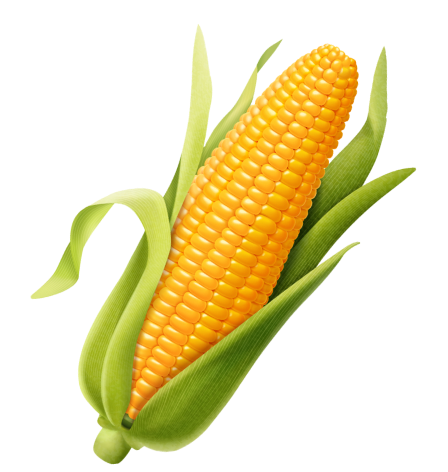Corn Seeds
How to Grow Corn That You’ll Love
Growing corn isn’t that hard but can be if you are new to growing. Mistakes are easy to make and could put you at a considerable disadvantage to your competitors. Thankfully, the best corn seeds the area has to offer can help out here. Make sure to read through this planting list after you buy high-quality seeds. Doing so will make sure that you get the best growing results possible for your needs.
The Proper Time to Plant Your Corn
When you plant corn seeds, timing is everything. This fact is true of any crop. However, it is particularly true of corn. That’s because corn needs to be planted at particular times to ensure that you get the best results. Without this time frame, you could end up putting your seeds in the ground at the worst time. Reduced crop yields and weak growths typically occur as a result of this action.
So, you should make sure that you plant your seeds outdoors at least two weeks after the last frost of spring. This time can vary depending on many factors. For example, you may have a pretty cold spring and experience a lot of frosts. As a result, you need to pay attention to the weather forecast and potential changes. Try to pick a time that is not only two weeks after the last frost, but when the temperature will be well-above the possibility of frost for at least two more weeks.
At this point, the risk of frost is as low as possible. Before you plant your seeds, make sure that you take the temperature of your soil. Though you may not have experienced any frost, the ground may still be too cold. Usually, you want to plant when the field is above 60 degrees Fahrenheit. Any colder and your corn won’t grow. For sweet corn, add another five degrees.
The Best Sites for Corn
Planting corn seeds isn’t as simple as throwing them in the ground and calling it a day. Instead, you need to scout out the best site for your plants. Typically, corn is quite picky about where it wants to grow. They like a particularly nutrient-rich soil and may struggle to grow elsewhere. As a result, you need to make sure you rotate your plants to keep your soil as productive as possible for their needs.
Try to add aged manure or compost into the soil in the previous year – usually during the fall – before you plant corn. This step helps to ensure that your ground is better for your corn growth. Also, make sure to check the density of the soil as well. Corn needs well-draining soil to absorb water properly. Looser soil also helps the extensive root system to grow better. However, they also need soil that can hold water, too.
When choosing for pollination needs, try to plant four-plant-thick blocks of corn rather than rows. Doing so helps to capture more pollen on the wind and gets it to your corn more easily. This not only helps to make your plants stronger but make sure that they have seeds. These seeds can then be harvested later to ensure that you can minimize your planting costs later in the season.
The Best Way to Plant Corn
Most planting specialists state that growing corn seeds indoors is not a good step. Though you may get good results starting some plants this way, corn usually starts better directly in the ground. Most corn has a hard time transplanting due to the size of its root systems. Instead, you should plant your seeds at least 1.5 to 2 inches deep into the soil at a distance of about 4-6 inches apart.
This planting depth and spacing give your corn more than enough room to grow correctly. The rows you create will vary depending on your needs. Keep adding plants at this spacing until you finish a row. And when you want to create a new row, make sure that it is at least 30-36 inches away from your last row. In this way, the roots have enough room to grow, and you can also walk between the rows quickly.
At this point, some farmers choose to add fertilizer to their corn. You can, if you want, mainly if you didn’t do so last year. The compost will help to make the soil stronger and make your plants grow taller and healthier. However, you can skip this step if you already added manure or if the ground has plenty of nutrients. Water each seed for a few seconds to give them enough dampness to start to grow.
The Most Effective Corn Care Options
Now, you need to pay attention to how well you care for your corn. This process usually occurs just after you have planted your corn seeds. Water them at a rate of about five gallons per square yard. This amount should give your corn more than enough moisture to grow. However, you may not need to water if you are going through a rainy season And, as always, eliminate weeds near your corn to keep it stable.
Beyond these tips, you may also want to add mulch around your corn plants. Mulch helps to minimize the amount of evaporation that your corn experiences during hot days. As a result, the water will remain in the soil more easily. Don’t let this item touch your corn plants, though, as they may damage its surface. Keep it at least 3-4 inches away to ensure that your crops are adequately protected.
Lastly, you need to protect them against many types of pests. Raccoon, deer, beetles, cutworms, crows, and other animals love eating corn. Pesticide is critical here and must be applied on a regular schedule. The amount used and the pattern of use varies depending on your growing program. Talk to your pest control agent to figure out what model is best for you. They can ensure you get the best results.
Contact Us to Get the Best Seeds
As you can see, the best corn seeds aren’t impossible to grow without a little help. So if you’re interested in growing corn and want to start with high-quality seeds, contact us at Online Seed Sales today. All of our products are carefully inspected to ensure that they meet your quality needs. We strive to provide the best and most potent seeds for farmers like you.


